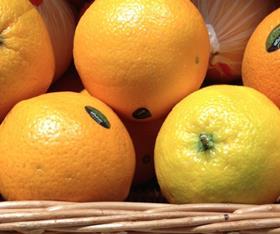
New duties on Uruguayan shipments to Europe, an increase in production in Morocco, Peru's emergence as a key international supplier, a downturn in Argentinean exports following recent frosts and a potential European ban on South African citrus are among the factors likely to shape the international citrus market this year, according to Justin Chadwick, chief executive of South Africa's Citrus Growers' Association.
Reporting back from recent meetings in Berlin alongside the Fruit Logistica trade show, Chadwick confirmed that Uruguay is set to lose its special preference duties in the EU and will therefore face a 16 per cent duty on mandarins as of this year. 'Uruguay faces increasing labour costs and a switch to automation,' he explained.
However, Uruguay's newly secured access to the US offered some good news for the country, he said. 'This has resulted in a trial of four containers being shipped to Philadelphia.'
He also noted that Argentina had suffered extensive frosts, the 'worst frost in 50 years, followed by a drought'.
As a result, it is anticipated that lemon production will drop from 1.33m tonnes to 900,000 tonnes in 2014, with exports likely to fall from 275,000 tonnes to 250,000 tonnes,
The 2013/14 Northern Hemisphere citrus crop is expected to be similar to last season's falling just 1 per cent according to Shaffe forecasts.
The Mediterranean basin's output will increase by 4 per cent, while in the US it will drop by 10 per cent, Chadwick revealed.
Other key findings revealed by Chadwick included:
• The Spanish orange and lemon crop will be characterised by small sizes.
• Italian citrus production area has shrunk by 20 per cent due to tristeza.
• Israeli grapefruit has 'not done well' during 2013/14 due to increased competition and a hangover of Southern Hemisphere grapefruit.
• Moroccan citrus production has increased to 2.2m tonnes as the Maroc Vert government initiative to renew old orchards takes effect.
• Freeze damage in California has prompted a 30 per cent drop in the Navel forecast and a 50 per cent cut for soft citrus.
• Devaluation of South African rand, Turkish lira and Argentinean peso were 'hot topics' during the Berlin meetings. Returns to South African growers could be up by as much as 20 per cent this year, although costs are rising too.
• Peru, which has signed Free Trade Agreements with Turkey, Russia and India, saw its citrus exports grow by 7 per cent in 2013.
Meanwhile, South African citrus exporters are still waiting to learn the results of a pesk risk assessment report relating to the disease citrus black spot, with Chadwick suggesting the document has been completed but won't be made available until the third week of February.



